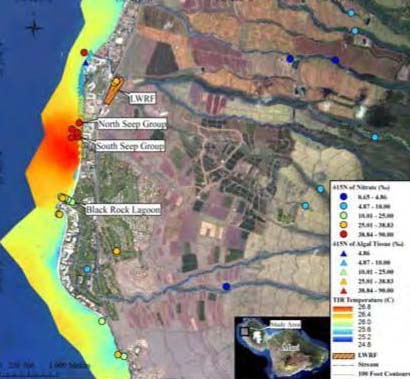Investigation begins to track suspected pollution from the Lahaina wastewater facility
Release date: 08/01/2011
Contact Information: Dean Higuchi, 808-541-2711, higuchi.dean@epa.gov
(08/01/11) HONOLULU – Federal and state agencies have begun important research to evaluate the suspected discharge of pollutants to the coastal waters along the Kaanapali coast of Maui.
Funded by the U. S. EPA, U.S. Army Corps of Engineers, and the Hawaii Department of Health, the University of Hawaii will measure how long it takes for wastewater from the Lahaina sewage treatment facility to flow to the near-shore ocean water. UH scientists will inject a tracer dye into the facility’s underground injection wells and monitor areas where fresh water seeps into the ocean for signs of the dye.
In addition, UH and Hawaii Department of Health staff will take periodic ocean water samples at identified ground water discharge points to assess water quality. Basic water quality will be sampled monthly, while certain toxic pollutants will be sampled quarterly.
“The tracer study will help us pinpoint wastewater movement from the Lahaina injection wells,” said Alexis Strauss, Director of the Water Division for the EPA’s Pacific Southwest Region. “The goal is to evaluate the potential impact of the facility’s discharge on the coastal waters.”
Reports on the results of the tracer dye test and water quality monitoring studies will be made available to the public later this year.
For additional information, please contact David Albright with EPA’s Ground Water Office at 415-972-3971, or Joanna L. Seto, P.E., Chief, DOH Safe Drinking Water Branch at 808-586-4258.


